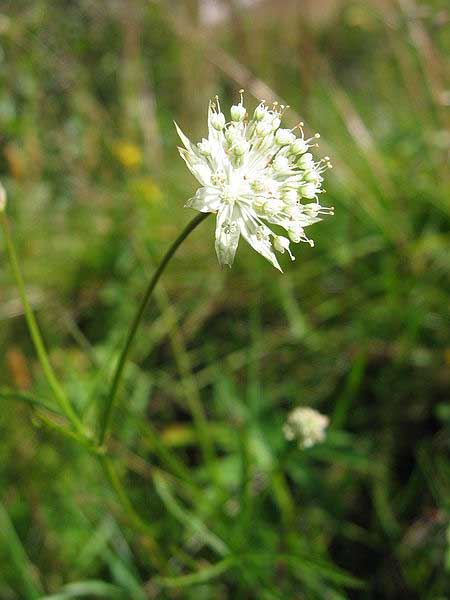
Astrantia minor (*)
Classification System: APG IV
Superregnum: Eukaryota
Regnum: Plantae
Cladus: Angiosperms
Cladus: Eudicots
Cladus: Core eudicots
Cladus: Asterids
Cladus: Campanulids
Ordo: Apiales
Familia: Apiaceae
Subfamilia: Saniculoideae
Tribus: Saniculeae
Genus: Astrantia
Sectiones: Astrantia sect. Astrantiella
Species: Astrantia minor
Name
Astrantia minor L. (1753)
Synonyms
Homotypic
Astrantia digitata Moench, Meth. 94 (1794), nom. illeg.
Astrantia helleborifolia Salisb., Prodr. (Salisbury) 159 (1796), nom. illeg.
Astrantia major subsp. minor (L.) Bonnier & Layens, Fl. Fr. 135 (1894).
Homonyms
Astrantia alpina Clairv., Man. Herb. 78 (1811).
Notes
Homonyms
Astrantia minor Scop. (1771)) = Astrantia carniolica Jacq.
Astrantia minor Vitm. = Astrantia pauciflora subsp. pauciflora
Distribution
Native distribution areas:
Continental: Europe
France, Switzerland, NE-Spain, Andorra, Italy, (Pyrenees, SW-Alps, N-Appennini)
References: Brummitt, R.K. 2001. TDWG – World Geographical Scheme for Recording Plant Distributions, 2nd Edition
References
Linnaeus, C. 1753. Species Plantarum. Tomus I: 235. Reference page.
Links
Hassler, M. 2018. Astrantia minor. World Plants: Synonymic Checklists of the Vascular Plants of the World In: Roskovh, Y., Abucay, L., Orrell, T., Nicolson, D., Bailly, N., Kirk, P., Bourgoin, T., DeWalt, R.E., Decock, W., De Wever, A., Nieukerken, E. van, Zarucchi, J. & Penev, L., eds. 2018. Species 2000 & ITIS Catalogue of Life. Published online. Accessed: 2018 Sep 15. Reference page.
International Plant Names Index. 2018. Astrantia minor. Published online. Accessed: Sep 15 2018.
The Plant List 2013. Astrantia minor in The Plant List Version 1.1. Published online. Accessed: 2018 Sep 15.
Tropicos.org 2018. Astrantia minor. Missouri Botanical Garden. Published online. Accessed: 15 Sep 2018.
Tela Botanica (ed.) 2000 onwards: Tela Botanica. Le réseau de la botanique francophone. eFlore. Astrantia minor. Association Tela Botanica, Montpellier, France. Accessed: 2009 Dec 20.
USDA, ARS, Germplasm Resources Information Network. Astrantia minor in the Germplasm Resources Information Network (GRIN), U.S. Department of Agriculture Agricultural Research Service. Accessed: 07-Oct-06.
Vernacular names
català: Astrància menuda
Deutsch: Kleine Sterndolde
English: Lesser Masterwort
français: Petite astrance
Nederlands: Klein sterrenscherm
Astrantia minor, the lesser masterwort,[3] is a species of herbaceous plant belonging to the family of Apiaceae. It is native within Europe, to the countries of France, Italy, Spain and Switzerland. It is clump-forming herbaceous perennial.
Description
Astrantia minor is a flowering plant that often reaches 15–30 cm in height, with simple stems, rarely branched in the upper half, the basal leaves are of two types, often on the same plant: one with narrow segments that are all pinnatisect, the other with broad segments, the central being pinnatisect and the lateral being deeply pinnatipartite; petioles 4–12 cm; the leaf blade with (5) 7 (8) segments of 1-3 (4.5) x 0.5 -1.3 cm, pale green, toothed in upper half or two thirds, the stem at the base of the inflorescence, from 2 to 3.2 x 0.2-0.5 cm reduced to 3-5 segments. Inflorescence with 1-3 peduncles unequal, the central, sometimes branched, and longer than the sides that have unique umbels; Umbels surrounded by (10) 12-14 bracts, 4-10 x 1–3 mm, membranous, entire, the apex green with three ribs. The flowers are 30-40 per umbel, of the same length or slightly shorter than the bracts, generally hermaphroditic in the centre and male peripherally. Calices have teeth about 1 mm in size, ovate-oblong, subobtuse and slightly bearded (1.5-2 times longer than wide). Petals are similar in size to the sepals and white or cream. Stamens exserted. Fruit ovoid (1.5) 2–5 mm with scales in the form of a vesicle, sub-obtuse. Flowering occurs in summer,[4] from July to August and fruiting between August and September.
It differs from its congener Astrantia major, by its smaller size, and basal leaves of seven segments (instead of five) with calyx teeth that are obtuse and slightly mucronate.[5][6][7]
Habitat
Found in some clumps of large plants near streams and in clearings in the scrubland of mountain azalea (Rhododendron ferrugineum), on fresh alpine and subalpine soil. It prefers a pure salicaceous substrate, at elevations of (1850) 2100 - 2300 (2600) meters.
Distribution
It is endemic to central and southern Europe (France, Switzerland, Italy and Spain).[1] On the Iberian Peninsula, it is found only in the Pyrenees, the Catalan lands and Huesca where it is found in the extreme southwest Valle de Benasque.
Taxonomy
In the UK, it has the common name of small black masterwort.[4]
It was first published and described by Carl Linnaeus in his book Species Plantarum on page 235 in 1753.[1][2][8]
It was verified by United States Department of Agriculture's Agricultural Research Service on 5 January 2000.[9]
References
"Astrantia minor L. | Plants of the World Online | Kew Science". Plants of the World Online. Retrieved 23 May 2021.
"Astrantia minor L." www.worldfloraonline.org. Retrieved 23 May 2021.
BSBI List 2007 (xls). Botanical Society of Britain and Ireland. Archived from the original (xls) on 2015-06-26. Retrieved 2014-10-17.
"Astrantia minor small black masterwort". Royal Horticultural Society. Retrieved 23 May 2021.
Tela Botánica: Astrantia minor Archived September 29, 2011, at the Wayback Machine
Real Jardín Botánico: Proyecto Anthos - Astrantia minor
Astrantia minor - Herbario Virtual del Mediterráneo Occidental
"Astrantia minor". www.ipni.org. Retrieved 23 May 2021.
"Astrantia minor". Germplasm Resources Information Network (GRIN). Agricultural Research Service (ARS), United States Department of Agriculture (USDA).
Other sources
Aldén, B., S. Ryman, & M. Hjertson. 2012. Svensk Kulturväxtdatabas, SKUD (Swedish Cultivated and Utility Plants Database; online resource) www.skud.info
Botanical Society of the British Isles. BSBI taxon database (on-line resource). URL: http://rbg-web2.rbge.org.uk/BSBI/taxonsearch.php
Pignatti, S. 1982. Flora d'Italia.
Tutin, T. G. et al., eds. 1964-1980. Flora europaea.
Retrieved from "http://en.wikipedia.org/"
All text is available under the terms of the GNU Free Documentation License

